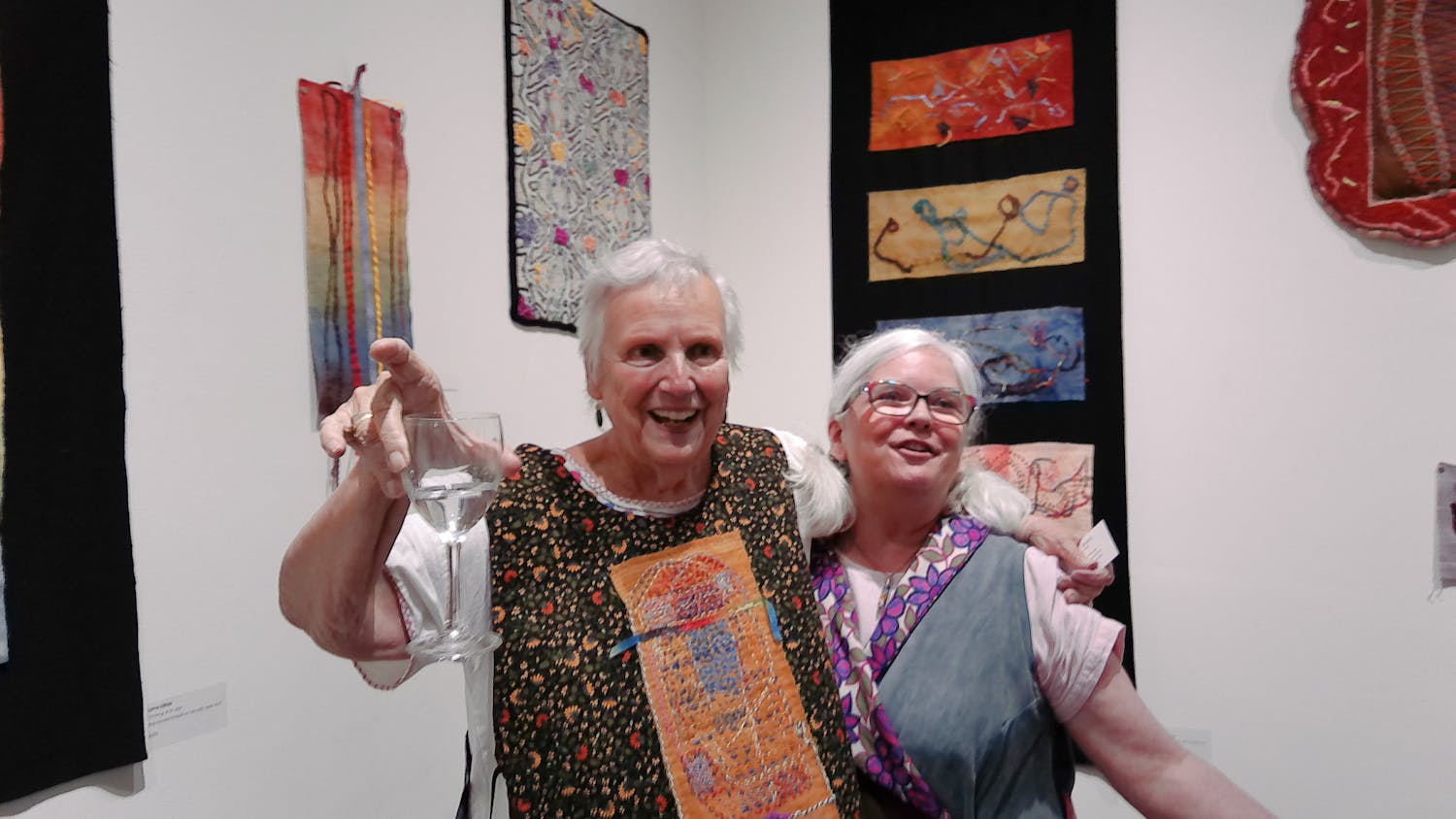Anyone and everyone becomes an artist at the Latest Glaze. Children and professionals alike have taken a brush in hand and created artwork that Bill Benedict, the owner, and Mary Jo Benedict, his wife, are proud of. They say the best part of their jobs is watching people create something that gives them a sense of accomplishment.\n"So many people think they can't do anything artistically, and we want to show them that they can," Mary Jo Benedict says. "It makes people so excited."\nBill and Mary Jo Benedict have not always been in the pottery business. For 25 years, Bill worked with adults with disabilities, both directly and administratively. He reached a point where he was looking for something different. Fortunately, he heard from a mutual friend about studios like the Latest Glaze in Boulder, Colo., who thought Bloomington would embrace such a company.\n"So, I took the risk and went for it," Bill Benedict says. While there are more than 600 Latest Glaze locations, the operation is not a franchise. \nBill Benedict enlisted the help of Mary Jo with the store. Once business picked up, Mary Jo decided to help out at the store while she wasn't teaching first and second grade. Recently, she's only been working at the school part time.\nBenedict says the Latest Glaze certainly attracts attention. Birthday parties, mothers with preschool children, couples on dates and businesses all come to the Latest Glaze to get in touch with their creative sides.\n"Businesses use it to take a breath and regroup," Bill Benedict says. "It gives them time away from their usual setting and lets them relate in a different way. It helps them re-energize."\nSororities, like Phi Mu, also see the experience as a bonding one. Erin White, a junior, talks about her previous experience there. White found it very relaxing to talk with her friends and listen to music while she painted a piggy bank. She believes bringing the new pledges will promote togetherness in the sorority.\n"We thought this would be a wonderful place to bring them to get to know each other," White says.\nWorkers at the Latest Glaze also find it to be an enjoyable experience and find it relaxing. Aimee Dolby, a master's student in art history, also enjoys seeing people create something they can be proud of and actually use. She also feels lucky to have Bill and Mary Jo Benedict as her bosses.\n"They are super nice. They're just like my friends," Dolby says.
THE EVENTS\nThe Latest Glaze takes care of the community and its customers, an example of which is the annual benefit for the Amethyst House, a home for people who have experienced some kind of abuse. Noted national and local artists and other celebrities come into the Latest Glaze and paint a piece of their choice. Once the pieces are finished, they are auctioned off, and the proceeds go to the Amethyst House.\nOf benefit to students are the IU student special Saturdays, when the cost of studio time is cut in half. Students will pay the price for the piece they choose and only $4 per hour spent painting, instead of the usual $8. Midnight Madness, usually on the second and fourth Fridays of the month, offers four hours of studio time for the price of one hour. Similarly, "Paint 'Til You Drop" happens twice a week, and paying for one hour of studio time will buy four hours. On Women's Mornings, women of all ages get half the studio rate from 10 a.m. to noon. During the month of January, customers can paint a mug, bowl or teapot and get an hour of studio time Thursdays for free. \n \nTHE Experience\nEntering the store, I saw a wide variety of ceramic pieces, ranging from different styles of coffee mugs to large plates to ceramic unicorns. Mary Jo Benedict greeted me and told me to pick whichever piece I wanted to do. Many different pieces that previous visitors had already finished were displayed in the window, while they waited for the creators to pick them up. These can generate ideas about what is possible. Also, the Latest Glaze provides idea books for those truly stumped. The idea books provided a variety of pattern ideas and color schemes, and they triggered many creative ideas.\nThe second step was choosing colors and patterns for the piece. Bill Benedict guided me through the specifics of the light, bright and dark colors and what works and what doesn't. One of the most important points is that light colors don't go over dark colors very well. He gave the example that many people want to do a dark blue background with yellow stars. Unfortunately, it doesn't look right. One way to get around this is to either leave a blank area to paint in after the dark color is done. The other option is to cut a shape out of adhesive paper, paint the dark colors, peel the tape off, and paint in the area with the lighter color. All the colors on the swatches show what they will look like after firing, as the colors in the bottle can be deceptive because they turn out much brighter after being fired in the kiln. \nHe also explained the many different tools that can be used to get a desired effect. Sponges, stamps, rubber bands, stencils and even Clip Art can be used. The stencils include letters and shapes. Stamps can be used to create a variety of shapes, including moons, stars and flowers. To use the stamps, a layer of paint is brushed on the pattern and then stamped onto the piece. Puffy paints can also be used for writing words and creating shapes. \nAs I was preparing to paint, Williams put on music on the stereo that sits on top of the counter. She played Simon and Garfunkel, and later Aretha Franklin and the Dixie Chicks played softly in the background at the request of the other employees. Somehow, the music inspired creativity and a certain sense of calm. The store is open and bright. Even the pink on the walls fits the atmosphere that closely matches a coffee house or massage parlor.\nAfter the instruction, I washed my hands to keep the oils off the ceramics and wet the piece down. Then, I took some time to pick which colors I wanted and consulted Williams about her preferences and ideas. Two or three cups sit on top of each table and held different sized brushes. Large brushes can be used to quickly cover a surface while smaller can be used to add detail.\nI tried out the sponges and the brushes on the sample paper, and looked at some of the examples they had in the store of sponge painting.\nSponge painting is perhaps the quickest way to paint, and it gives the piece a very textured effect. For those who don't just want a flat background, this is a good choice. Colors can be dabbed over one other for an even richer look.\nI decided to stick with the brush, for no particular reason, and used one stamp to create a pattern all the way around the mug. I used the color light scarlet for the background on the outside, dark wine for the stripes, and dark delft on the the star-shaped stamp. For the inside, I used a light blue and a shade of green called bright nautical. It took me about two hours to paint, and that included deciding which colors to use and where and resupply my paint. Bill Benedict says that most kids take about an hour to an hour and a half and that adults usually take longer. It all depends on how intricate the artist wants to be. Painting might take up to four hours for someone who wants to add more detail.\nOnce I finished, I gave the piece to Bill Benedict. It typically takes three to four days for the piece to be finished. When I picked it up, I was surprised to see how much the colors had changed since I had last seen the mug. All the colors were very bold and bright, and I felt proud carrying it out of the store and putting it in my cabinets next to all my favorite mugs.





